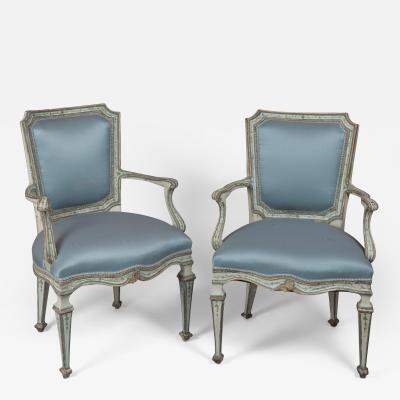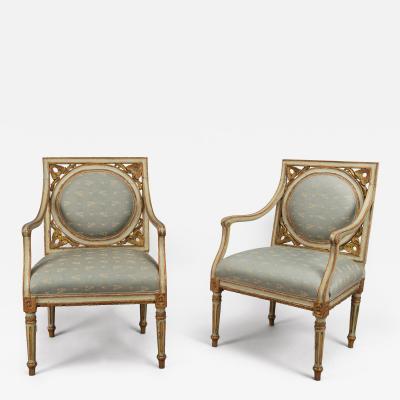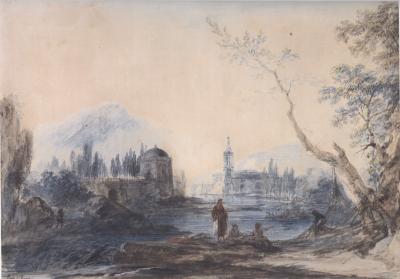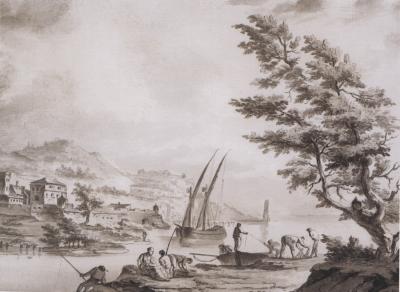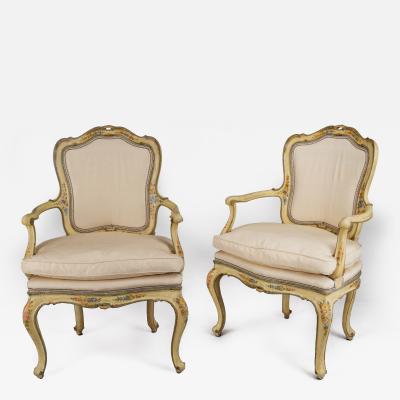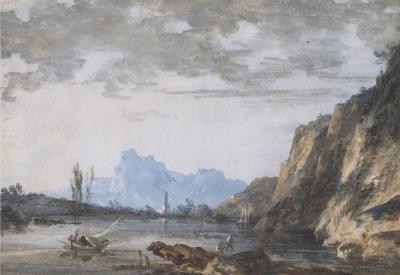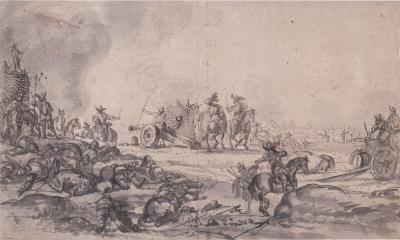Ruins of a vaulted classical interior
-
Description
Born into a family of Parisian craftsmen, Pierre-Antoine de Machy (or Demachy) trained under the architect, stage designer and painter, Giovanni Niccolò Servandoni, who had studied in Rome with Panini and later designed the Church of Saint Sulpice in Paris. In 1755, Demachy became an associate of the Académie Royale, elected a full member three years later, presenting an architectural fantasy of the interior of a ruined temple. From 1786, he worked at the Academy as a Professor of Perspective, teaching Louis-Gabriel Moreau, amongst others. Regularly exhibiting at the Salon from 1757 to 1802, the artist submitted several paintings of historical subject, but specialized in “ruin pieces,” usually depicting actual Parisian views and sometimes Roman capricci inspired by Piranes, Panini and Clérisseau. Painting the architectural monuments of the French capital in the same way that Panini had represented Rome, albeit often with more accuracy, Demachy documented the changing urban fabric of Paris. Capturing the demolition ad rebuilding programs which aggrandized Paris in the third quarter of the eighteenth century, the artist’s dated work has often established the architecturally chronology of many of the city’s buildings. His views of the Louvre, for example, captured the successive stages of the opening and expansion of the colonnade from 1756 to 1776.
Although known principally for his scenes of Paris, in various stages of demolition and splendor, Demachy also completed a number of views of specific Roman monuments as well as many Roman inspired architectural fantasies, such as this watercolor drawing. Never having left France, and certainly never having visited Italy, he seemingly based his knowledge of Roman sites on the work of those artists who had made the journey. Whether studying the work of Servandoni, paintings shown at the Salon, or widely disseminated engravings, Demachy evidently was exposed to enough secondary sources of inspiration to satisfy his artistic curiosity. This oval drawing, for example, in which figures lounge beside a sarcophagus in an ancient vaulted interior is based directly upon a composition by Clérisseau, which was engraved, a hand colored example of which is in the Fitzwilliam Museum in Cambridge (see Musée du Louvre, Charles-Louis Clérisseau (1721-1820): Dessins du musée de l’Ermitage, Saint-Pétersbourg, Paris, 1995, p. 82, fig. 56). In his handling of the subject, however, Demachy extends the original round format to a large oval size, and adds his delicate mastery of watercolor wash, enlivening the scene. -
More Information
Documentation: Ample Provenance Notes: This oval drawing is directly based on a composition by Clerisseau, which was engraved. In his handling of the subject de Machy extends the original round format to a large oval size, and adds his delicate mastery of watercolor wash, enlivening the scene. Origin: France Period: 18th Century Materials: Pen and black ink and watercolor on off white laid paper, laid on mount Creation Date: 1723-1807 Styles / Movements: Realism, Other Incollect Reference #: 305080 -
Dimensions
W. 8.7 in; H. 10.86 in; W. 22.1 cm; H. 27.58 cm;
Message from Seller:
L' Antiquaire & The Connoisseur, Inc. specializes in European works of art, antiques, and paintings, with a rich history dating back to 1935. For more information, contact us at 212.517.9176 or info@lantiquaire.us.


















